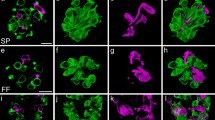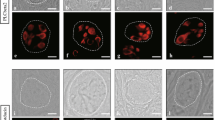Abstract
Sox2, which encodes an HMG box transcription factor, is known to regulate the differentiation of progenitor cells of the tongue into taste bud cells versus keratinocytes during development. To determine the neural dependence of Sox2 expression, glossopharyngeal nerves of mice were cut bilaterally. In unoperated mice, the expression of Sox2 mRNA and protein was restricted to a subset of taste bud cells and to the epithelium surrounding the taste buds of the circumvallate papillae. During the period of denervation, the taste buds largely disappeared; the taste bud cells and the epithelial cells with Sox2-immunoreactive (IR) nuclei decreased in number and totally disappeared from the epithelium by 16 days after denervation. When regenerated nerve fibers entered the epithelium, Sox2 expression reappeared, first in the epithelial cells, and then in the regenerating taste bud cells. In prenatal mice, Sox2 was expressed in the epithelium of the dorsal surface of circumvallate papillae, in regions into which numerous nerve fibers had entered. The results suggested that Sox2 expression was dependent on gustatory innervation. Sox2-IR cells in the taste buds were also examined by double-immunolabeling for 5-bromo-2′-deoxyuridine and cell-type markers such as cytokeratin 14, neural cell adhesion molecule, inositol 1,4,5-triphosphate receptor 3, and blood group H antigen. Sox2-IR cells were found in the populations of basal cells and of immature and some mature taste bud cells. A large number of Sox2-IR cells were identified as type-I cells, with a few being type-II and type-III cells.




Similar content being viewed by others
References
Asano-Miyoshi M, Hamamichi R, Emori Y (2007) Cytokeratin 14 is expressed in immature cells in rat taste buds. J Mol Histol Oct 25 Epub
Bani-Yaghoub M, Tremblay RG, Lei JX, Zhang D, Zurakowski B, Sandhu JK, Smith B, Ribecco-Lutkiewicz M, Kennedy J, Walker PR, Sikorska M (2006) Role of Sox2 in the development of the mouse neocortex. Dev Biol 295:52–66
Beites CL, Kawauchi S, Crocker CE, Calof AL (2005) Identification and molecular regulation of neural stem cells in the olfactory epithelium. Exp Cell Res 306:309–316
Clapp TR, Stone LM, Margolskee RF, Kinnamon SC (2001) Immunocytochemical evidence for co-expression of type III IP3 receptor with signaling components of bitter taste transduction. BMC Neurosci 2:6
Clapp TR, Yang R, Stoick CL, Kinnamon SC, Kinnamon JC (2004) Morphologic characterization of the phospholipase C signaling pathway. J Comp Neurol 463:311–321
Farbman AI (1980) Renewal of taste bud cells in rat circumvallate papillae. Cell Tissue Kinet 13:349–357
Hall JM, Hooper JE, Finger TE (1999) Expression of sonic hedgehog, patched, and Gli1 in developing taste papillae of the mouse. J Comp Neurol 406:143–155
Hamamichi R, Asano-Miyoshi M, Emori Y (2006) Taste bud contains both short-lived and long-lived cell populations. Neuroscience 141:2129–2138
Hosley MA, Huges SE, Oakley B (1987) Neural induction of taste buds. J Comp Neurol 260:224–232
Huang YJ, Maruyama Y, Lu KS, Pereira E, Plonsky I, Baur JE, Wu D, Roper SD (2005) Mouse taste buds use serotonin as neurotransmitter. J Neurosci 25:843–847
Lawton DM, Furness DN, Lindemann B, Hackney CM (2000) Localization of the glutamate-aspartate transporter, GLAST, in rat taste buds. Eur J Neurosci 12:3163–3171
Miura H, Kusakabe Y, Harada S (2006) Cell lineage and differentiation in taste buds. Arch Histol Cytol 69:209–225
Neves J, Kamaid A, Alsina B, Giraldez F (2007) Differential expression of Sox2 and Sox3 in neuronal and sensory progenitors of the developing inner ear of the chick. J Comp Neurol 503:487–500
Nosrat IV, Lindskog S, Seiger A, Nosrat CA (2000) Lingual BDNF and NT-3 mRNA expression patterns and their relation to innervation in the human tongue: similarities and differences compared with rodents. J Comp Neurol 417:133–152
Okubo T, Pevny LH, Hogan BL (2006) Sox2 is required for development of taste bud sensory cells. Genes Dev 20:2654–2659
Perez CA, Huang L, Rong M, Kozak JA, Preuss AK, Zhang H, Max M, Margolskee RF (2002) A transient receptor potential channel expressed in taste receptor cells. Nat Neurosci 5:1169–1176
Pumplin DW, Getschman E, Boughter JD, Yu C, Smith DV (1999) Differential expression of carbohydrate blood-group antigens on rat taste-bud cells: relation to the functional marker alpha gustducin. J Comp Neurol 415:230–239
Reutter K, Witt M (1993) Morphology of vertebrate taste organs and their nerve supply. In: Simon SA, Roper SD (eds) Mechanisms of taste transduction. CRC Press, Boca Raton, pp 29–82
Seta Y, Stoick-Cooper CL, Toyono T, Kataoka S, Toyoshima K, Barlow LA (2006) The bHLH transcription factors, Hes6 and Mash1, are expressed in distinct subsets of cells within adult mouse taste buds. Arch Histol Cytol 69:189–198
Stone LM, Tan S-S, Tam PPL, Finger TE (2002) Analysis of cell lineage relationships in taste buds. J Neurosci 22:4522–4529
Suzuki Y, Takeda M, Obara N, Nagai Y (1996) Phagocytic cells in the taste buds of rat circumvallate papillae after denervation. Chem Senses 21:467–476
Takeda M, Obara N, Suzuki Y (1990) Keratin filaments of epithelial and taste bud cells in the circumvallate papillae of adult and developing mouse. Cell Tissue Res 210:71–78
Takeda M, Suzuki Y, Obara N, Nagai Y (1992) Neural cell adhesion molecule of taste buds. J Electron Microsc 41:375–380
Takeda M, Suzuki Y, Obara N, Breipohl W (1999) Expression of the neural cell adhesion molecule in mouse taste buds after denervation. J Electron Micrsc 48:39–45
Takeda M, Suzuki Y, Obara N, Uchida N, Kawakoshi K (2005) Expression of glial cell line-derived neurotrophic factor (GDNF) and GDNF family receptor a1 in mouse taste bud cells after denervation. Anat Sci Int 80:105–110
Uchida N, Kanazawa M, Suzuki Y, Takeda M (2003) Expression of BDNF and TrkB in mouse taste buds after denervation and in circumvallate papillae during development. Arch Histol Cytol 66:17–25
Witt M, Kasper M (1998) Immunohistochemical distribution of CD44 and some of its isoforms during human taste bud development. Histochem Cell Biol 110:95–103
Yee CL, Jones KR, Finger TE (2003) Brain-derived neurotrophic factor is present in adult mouse taste cells with synapses. J Comp Neurol 459:15–24
Yee CL, Bartel DL, Finger TE (2005) Effects of glossopharyngeal nerve section on the expression of neurotrophins and their receptors in lingual taste buds of adult mice. J Comp Neurol 490:371–390
Zhang C, Oakley B (1996) The distribution and origin of keratin 20-containing taste buds in rat and human. Differentiation 61:121–127
Zhang Y, Hoon MA, Chandrashekar J, Mueller KL, Cook B, Wu D, Zucker CS, Ryba NJ (2003) Coding of sweet, bitter, and umami tastes: different receptor cells sharing similar signaling pathways. Cell 112:293–301
Author information
Authors and Affiliations
Corresponding author
Rights and permissions
About this article
Cite this article
Suzuki, Y. Expression of Sox2 in mouse taste buds and its relation to innervation. Cell Tissue Res 332, 393–401 (2008). https://doi.org/10.1007/s00441-008-0600-1
Received:
Accepted:
Published:
Issue Date:
DOI: https://doi.org/10.1007/s00441-008-0600-1




